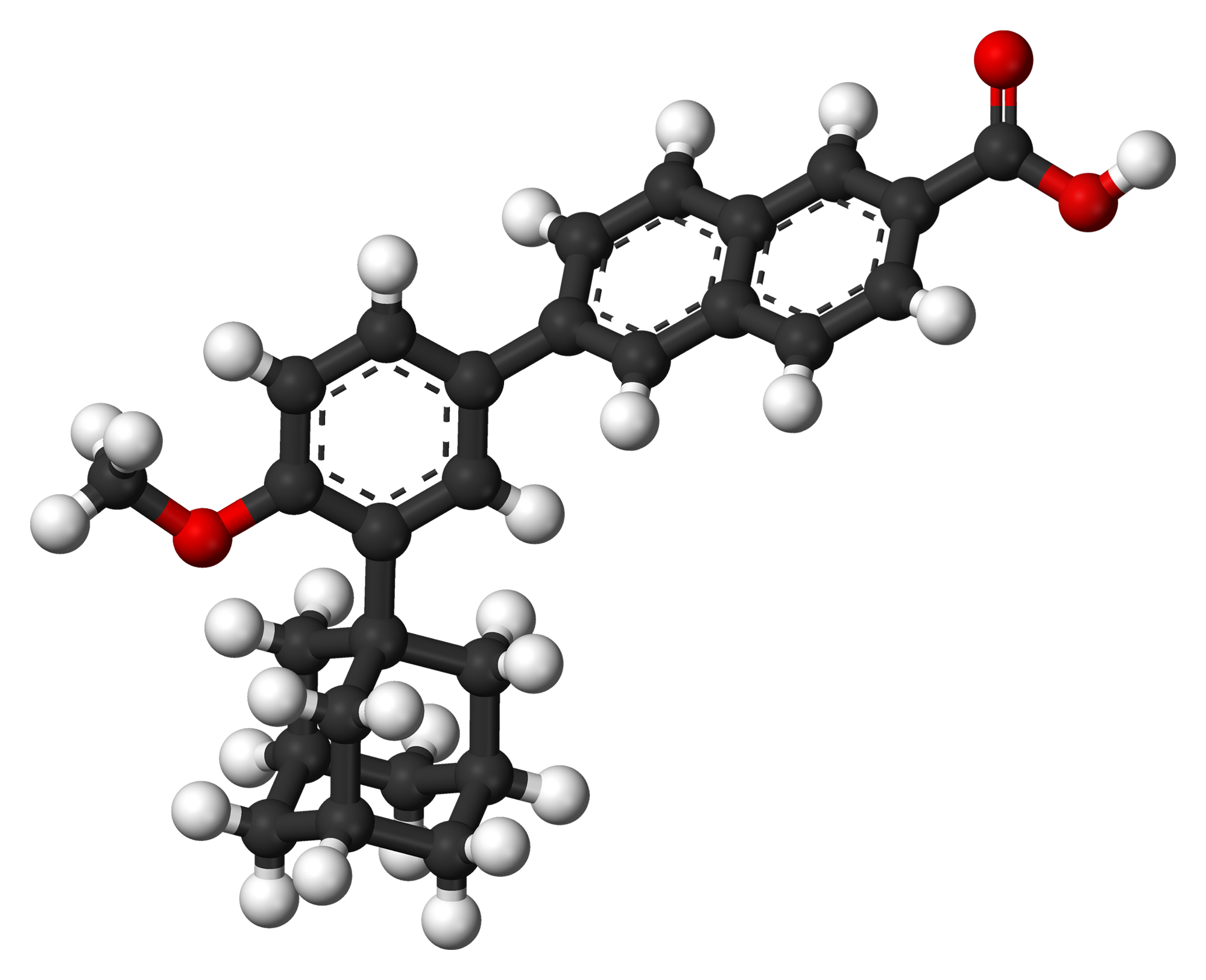| drug | Adapalene Topical |
| name | Adapalene Topical |
| classification | Retinoid, Topical |
| pharmacokinetics | Adapalene is a topical retinoid that is primarily absorbed locally and is not significantly systemically absorbed. The extent of absorption is very low. It is metabolized in the skin and does not undergo significant first-pass metabolism. The drug is slowly eliminated from the skin. |
| suggested dosage | The typical dosage for acne vulgaris is 0.1% adapalene cream or gel, applied once daily to affected areas in the evening. A dermatologist should determine the most appropriate dosage and frequency for an individual patient, taking into account the severity and type of acne and any potential drug interactions. Important Note: Specific dosage recommendations are tailored by the treating physician. |
| indications | Treatment of acne vulgaris. |
| safety in pregnancy | Adapalene is generally not recommended during pregnancy due to theoretical concerns about potential effects on fetal development. If a woman of childbearing potential is using adapalene, she should be advised to use effective contraception. Consult with a physician regarding the risks and benefits of using the medication. |
| safety in breastfeeding | Limited data on adapalene's safety during breastfeeding are available. The potential for absorption into breast milk is low, but there may still be some risk. Consult with a healthcare professional before using this medication while breastfeeding. |
| side effects | | 1 | Skin irritation (e.g., redness, dryness, scaling, peeling, burning, stinging) | | 2 | Exacerbation of acne (e.g., initial worsening of acne) initially | | 3 | Local skin reactions such as erythema or inflammation | | 4 | Hyperpigmentation | | 5 | Post-inflammatory hyperpigmentation | | 6 | Rarely, contact dermatitis |
|
| alternatives | |
| contraindications | | 1 | Known hypersensitivity or allergy to adapalene or any of its components. | | 2 | Active skin infections or conditions at the application site (such as open wounds, eczema). |
|
| interactions | Some medications (e.g., certain topical retinoids) can potentiate the adverse effects of adapalene. |
| warnings and precautions | | 1 | Avoid sun exposure and use of sunscreen in patients using adapalene, as the medication may increase skin sensitivity to sunlight. | | 2 | Do not apply the medication to the eyes or mucous membranes. | | 3 | Patients should be monitored closely for any adverse effects and should discontinue the medication if any serious side effects arise. A dermatologist should be consulted for any questions or concerns. | | 4 | Adapalene is not effective in treating all types of acne. It should be used in conjunction with proper skin care routines to maximize effectiveness. |
|
| additional information | Adapalene is a retinoid that works by accelerating cell turnover in the skin. This helps unclog pores and reduce acne. It can also improve the appearance of wrinkles and fine lines, but this is not a primary indication for its use. Patients should carefully follow the prescribed dosage and application instructions to minimize side effects and ensure efficacy. |
| patient specific details | | age | 25 years | | weight | 70 kg | | additional notes | Based on age and weight, the typical dosage and application of Adapalene topical is appropriate. The patient should inform the physician about any other medications they are taking to prevent potential interactions. This information is for general knowledge and informational purposes only, and does not constitute medical advice. Always consult with a qualified healthcare professional for personalized medical guidance. |
|
